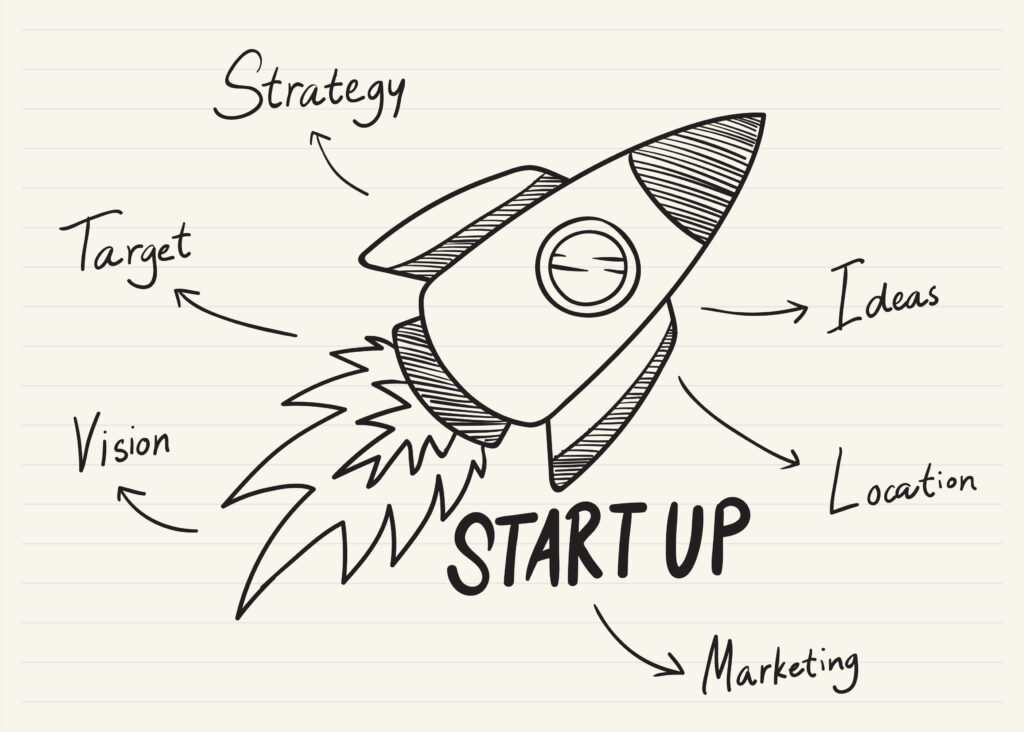The Blueprint of a Successful Startup Strategy

Starting a new business venture is both exhilarating and daunting. The allure of innovation, the thrill of potential success, and the drive to solve a problem can fuel entrepreneurs. However, without a clear strategy, many startups fail to sustain their initial momentum. Crafting a well-defined strategy is crucial for navigating the complexities of the startup ecosystem. Here’s a comprehensive blueprint for developing a robust startup strategy.
1. Vision and Mission: The Foundation
Every startup needs a clear vision and mission. The vision is your long-term aspiration, the ultimate goal you aim to achieve. The mission, on the other hand, is the purpose of your startup, the reason for its existence.
Vision Example: To revolutionize urban transportation and make cities greener and more efficient.
Mission Example: To provide affordable, eco-friendly, and efficient ride-sharing solutions that reduce carbon footprints and traffic congestion.
Why It Matters:
A clear vision and mission guide your decisions, inspire your team, and attract like-minded stakeholders.
2. Market Research: Understanding Your Landscape
Comprehensive market research is essential for identifying opportunities and threats. This involves understanding your target audience, analyzing competitors, and gauging market trends.
Steps to Effective Market Research:
- Identify Your Target Audience: Understand their needs, preferences, and pain points.
- Competitive Analysis: Study your competitors’ strengths, weaknesses, market positioning, and strategies.
- Market Trends: Keep an eye on industry trends, technological advancements, and regulatory changes.
Tools:
- Surveys and Questionnaires: Direct feedback from potential customers.
- SWOT Analysis: Identifying Strengths, Weaknesses, Opportunities, and Threats.
- Analytics Tools: Google Trends, SEMrush, and industry reports.
3. Value Proposition: Defining Your Unique Selling Point (USP)
Your value proposition is what sets you apart from competitors. It’s a concise statement that articulates the unique benefits your product or service offers.
Crafting Your Value Proposition:
- Identify the Problem: Clearly define the problem your startup aims to solve.
- Solution: Describe how your product or service solves this problem uniquely.
- Benefits: Highlight the specific benefits and value your solution provides.
Example:
For a ride-sharing startup: “We offer the fastest, greenest, and most affordable ride-sharing service that reduces your commute time by 50% and cuts emissions by 30%.”
4. Business Model: Choosing the Right Framework
Your business model is how your startup plans to make money. It outlines the way you deliver value to your customers and how you capture value in return.
Common Business Models:
- Subscription Model: Customers pay a recurring fee (e.g., Netflix).
- Freemium Model: Basic services are free, premium features are paid (e.g., Spotify).
- On-Demand Model: Services provided on a per-use basis (e.g., Uber).
Considerations:
- Revenue Streams: Identify multiple revenue streams to diversify income.
- Cost Structure: Understand fixed and variable costs to maintain profitability.
- Scalability: Ensure your model can scale with growth.
5. MVP Development: Start Small, Think Big
A Minimum Viable Product (MVP) is the simplest version of your product that can be released to test your assumptions and gather user feedback.
Steps to Develop an MVP:
- Core Features: Focus on essential features that solve the primary problem.
- Build: Develop the MVP quickly and cost-effectively.
- Test: Launch to a small group of early adopters and gather feedback.
Benefits:
- Validate Hypotheses: Test your business assumptions with real users.
- Iterate Quickly: Make necessary adjustments based on feedback.
- Minimize Risk: Avoid large investments in unproven ideas.
6. Marketing and Growth Strategy: Building Momentum
Marketing is crucial for gaining traction and growing your user base. A well-defined marketing strategy ensures you reach and engage your target audience effectively.
Key Components:
- Branding: Develop a strong brand identity that resonates with your audience.
- Digital Marketing: Leverage SEO, content marketing, social media, and email campaigns.
- Growth Hacking: Implement creative, low-cost strategies to acquire and retain customers.
Example Tactics:
- Content Marketing: Publish valuable content to attract and educate your audience.
- Influencer Partnerships: Collaborate with influencers to expand your reach.
- Referral Programs: Encourage existing users to refer new customers.
7. Funding and Financial Management: Fueling Your Growth
Securing funding is often necessary for scaling your startup. Equally important is managing your finances prudently.
Funding Options:
- Bootstrapping: Self-funding your startup.
- Angel Investors: High-net-worth individuals who invest in early-stage startups.
- Venture Capital: Firms that provide capital in exchange for equity.
- Crowdfunding: Raising small amounts of money from a large number of people.
Financial Management:
- Budgeting: Create and adhere to a budget to control costs.
- Cash Flow Management: Ensure you have sufficient cash flow to meet obligations.
- Financial Forecasting: Project future revenues and expenses to plan for growth.
8. Team Building: Assembling a Winning Squad
A startup’s success heavily depends on its team. Building a team with complementary skills, shared vision, and strong work ethics is crucial.
Steps to Build a Strong Team:
- Define Roles: Clearly outline roles and responsibilities.
- Hire for Culture Fit: Ensure new hires align with your startup’s culture and values.
- Foster Collaboration: Encourage open communication and teamwork.
Leadership Tips:
- Lead by Example: Demonstrate the work ethic and values you expect from your team.
- Empower Your Team: Provide autonomy and opportunities for professional growth.
- Cultivate a Positive Environment: Create a supportive and motivating workplace culture.
9. Customer Focus: Building Relationships
Customer feedback is invaluable for improving your product and ensuring it meets market needs. Prioritize building strong relationships with your customers.
Strategies:
- Customer Support: Provide exceptional customer service to build loyalty.
- Feedback Loops: Regularly collect and act on customer feedback.
- Community Building: Foster a community around your brand to increase engagement.
10. Adaptability and Resilience: Navigating Challenges
The startup journey is fraught with challenges and uncertainties. The ability to adapt and remain resilient in the face of setbacks is critical.
Tips for Adaptability:
- Stay Agile: Be willing to pivot your strategy based on market feedback.
- Continuous Learning: Keep learning and evolving to stay ahead of industry trends.
- Maintain Perseverance: Stay committed to your vision, even during tough times.
Conclusion
Crafting a successful startup strategy involves a mix of vision, research, planning, and execution. By laying a strong foundation, understanding your market, and remaining adaptable, you can navigate the challenges of the startup world and build a business that not only survives but thrives. Remember, every great startup began with a single idea, but it’s the strategy that turns that idea into reality.






Responses